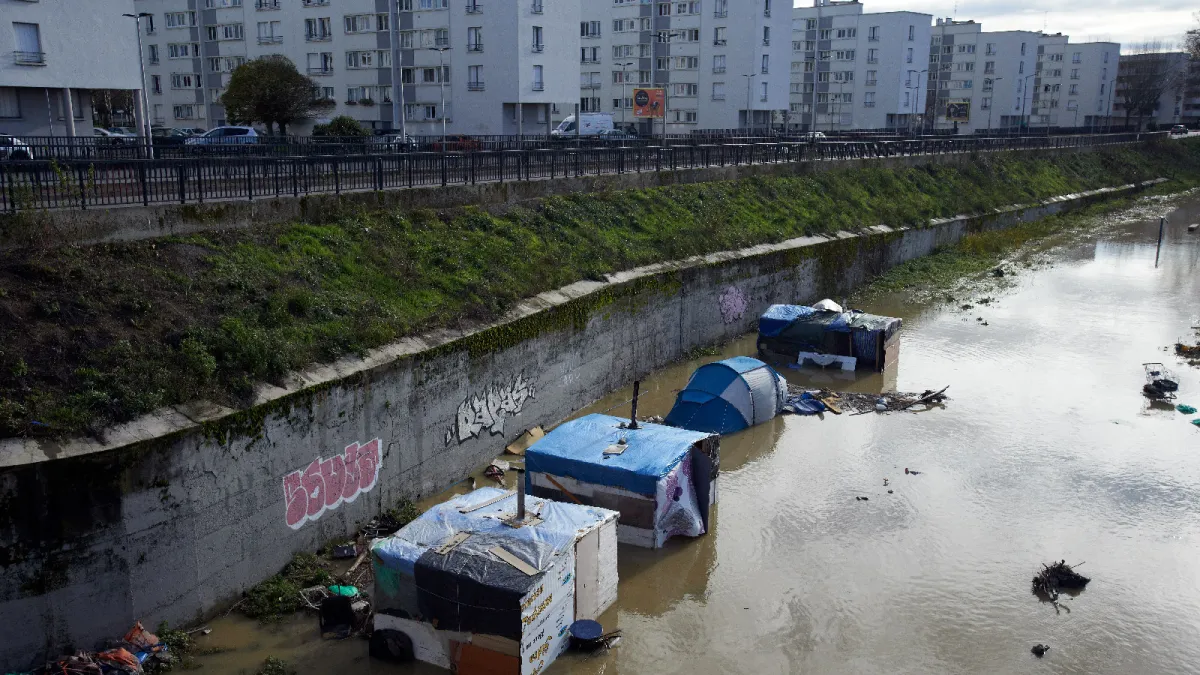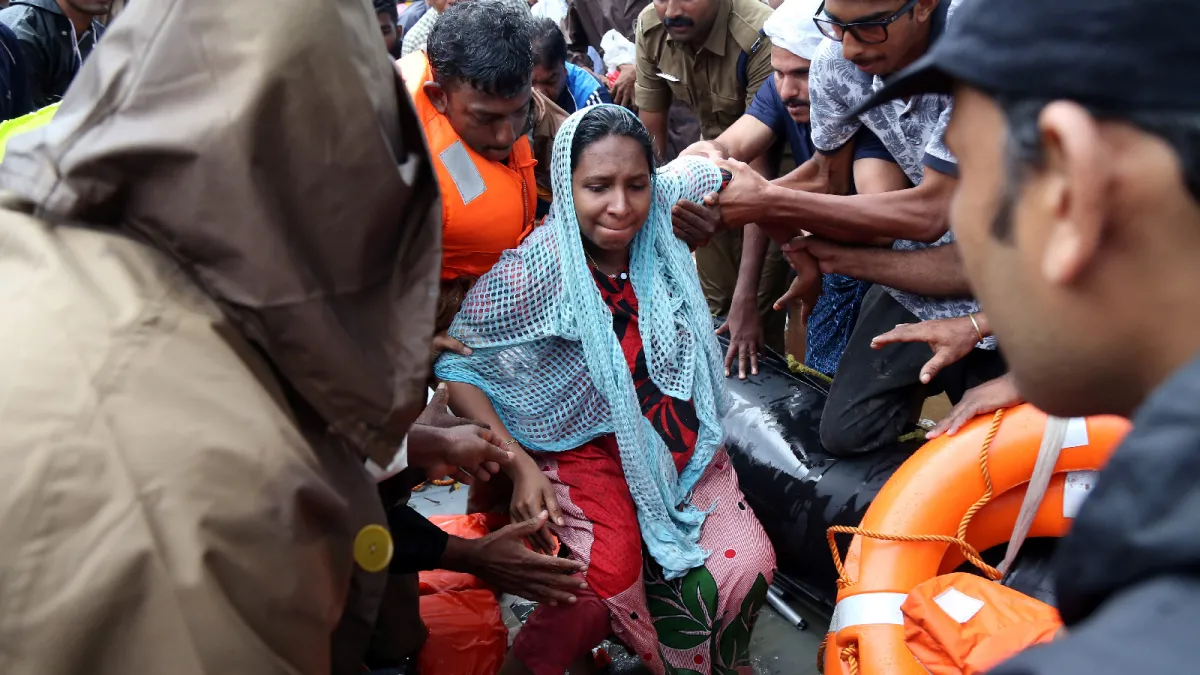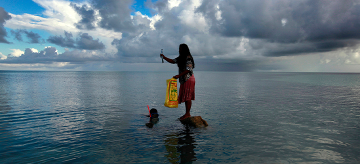How Climate Change Worsens Inequality
Climate Change is bad for everyone, but it’s worse for some.
In 2016, a powerful Category 4 hurricane hit Haiti, a small country in the Caribbean. The destructive storm quickly moved across the country, pummeling Haiti’s infrastructure and taking many lives. The destruction from that event—called Hurricane Matthew—was widespread and had consequences far beyond its initial impact. The hurricane had hit a major farming area in Haiti. Alongside destroying many homes, it obliterated much of the country’s available crops just before Haiti’s planned harvest—which led to widespread hunger and malnutrition. Families lacked access to clean water and sanitation and suffered from outbreaks of diseases like cholera. The effects of the hurricane have been long lived, damaging public health and pushing populations into poverty.
According to climate scientists, global greenhouse gas emissions were partly to blame. They say Hurricane Matthew was likely intensified by warming ocean waters in the Atlantic. The devastation it caused is just one example of a grim reality about climate change: it affects us all, but it doesn’t affect us equally.
Climate change is particularly harmful for the countries—and people—that are most vulnerable. What’s more, the populations most at risk are often the least responsible for climate change.
This resource explores how climate change is exacerbating inequalities in two ways. For one, it expands the divides between wealthier and poorer nations, damaging efforts to reduce the gap between developed and developing countries. It also worsens inequalities within countries, hitting vulnerable communities hardest.
How does climate change worsen inequality between countries?
Climate change damages all countries; no one nation is immune from the harms brought by greenhouse gas emissions. But developing countries can face particular challenges regarding climate change’s hazards and adapting to them.
Developing countries tend to suffer the greatest consequences from natural disasters. In the most extreme cases, small island nations in the Pacific could need to relocate their entire populations as sea levels rise. In 2020, a UN report found that the poorest countries in the world experienced almost 70 percent of the deaths caused by climate-related disasters over the previous five decades. Developing countries often lack the resources to prepare for, respond to, and recover from natural disasters. That same study found disasters were almost ten times more damaging to poorer countries than richer countries.
Climate change is not only threatening countries with weaker economies but also actively hindering their economic growth. Climate change can increase the hardships developing countries currently face, such as high levels of debt and persistent poverty. It can also introduce new ones, such as sudden spikes in food insecurity or damage to infrastructure. Governments that already have limited economic resources can struggle to fund climate adaptation efforts. That financial strain makes it difficult to invest in sustainable development as well.
Such challenges cause developing economies to grow more slowly. In a 2019 study, for example, experts found that global warming had lowered Bangladesh’s gross domestic product (GDP) per capita by 12 percent. Similarly, the study reported that in sub-Saharan African countries like Burkina Faso, Niger, and Sudan, GDP was 20 percent lower than it would have been without climate change.
Ultimately, climate change can lock developing countries in a vicious cycle. Without the resources to mitigate or adapt to it, they become increasingly vulnerable to further economic damage. That makes responding even harder over time.
As developing countries’ economies suffer from climate change, richer economies suffer much less. Because they have more resources, they can more easily fund climate adaptations while continuing to invest in other economic priorities.
Overall, the disproportionate impacts of climate change drive global inequality even wider. One Stanford University study found that the gap between economic outputs of the world’s richest and poorest countries is already 25 percent larger than it would have been without global warming.
That economic inequality is compounded by a disparity in responsibility. According to the global nongovernmental organization Oxfam America, it takes 581 people living in Burundi, a small landlocked country in central Africa, to emit as much as the average American each year. So, people living in the United States are more responsible for emissions, but people living in countries like Burundi suffer more of the harms.
How does climate change increase inequality within countries?
Climate change is not just worsening inequality among countries. It also worsens imbalances within countries, as marginalized groups often suffer most from climate change’s consequences.
Global warming has been found to affect women and men differently. In many societies, women and girls are responsible for securing household resources like food, water, and fuel. When those resources grow more difficult to obtain, such as during droughts or famines, women disproportionately bear the increased burden. Moreover, when food is scarce, women are often the last to eat. Climate change will therefore have an outsized effect on women. The effects will be felt both directly, through events like droughts or storms, and indirectly, by worsening poverty. Moreover, climate change can put women at increased risk of violence and abuse. Research shows [PDF] that gender-based violence becomes more frequent during and after emergencies, including climate-related disasters.
Climate change also amplifies the marginalization of people with disabilities, older adults, and other vulnerable groups. Those individuals can suffer more if infrastructure is damaged, or health-care support becomes limited. For example, during an evacuation to safer areas, people with limited mobility are sometimes unable to leave. If they do relocate, they could end up in temporary shelters that lack accessible conditions.
Indigenous communities are particularly at risk. Climate change is displacing indigenous groups, who tend to live in ecologically sensitive areas, at seven times the rate of the wider population. Many indigenous people inhabit coastlines, mountains, and forests. Those areas can be particularly vulnerable to the shocks of climate change and extreme weather events. In many countries, including Bangladesh, Cameroon, and Pakistan, numerous indigenous groups have been uprooted from their ancestral lands.
Climate change also exacerbates racial inequities. In 2021, for example, a major cold snap hit Houston—an extreme weather event scientists have linked to Arctic warming—and Black and Latino communities faced disproportionate harms. Such extreme temperatures can saddle marginalized communities with health problems, loss of electricity and heat, and longer wait times to restore those services. The intersections of poverty, ethnic and racial divides, and other factors have long served as force multipliers for inequality. For that reason, many policymakers and activists call for greater attention to those disparities in climate policies to ensure the most vulnerable do not suffer even more from climate change.
Climate-smart and equitable solutions
The good news is that there are many efforts today to adopt approaches that are both climate-smart and attuned to the importance of advancing equity nationally and worldwide. What’s more, well-managed efforts to transition economies and support reduced emissions are generally good for those economies and for reducing poverty. Given the connections between climate change and inequality, many climate strategies could help promote a greener and more equitable future.
You can explore some of the just and equitable climate solutions that are being adopted in this resource.






